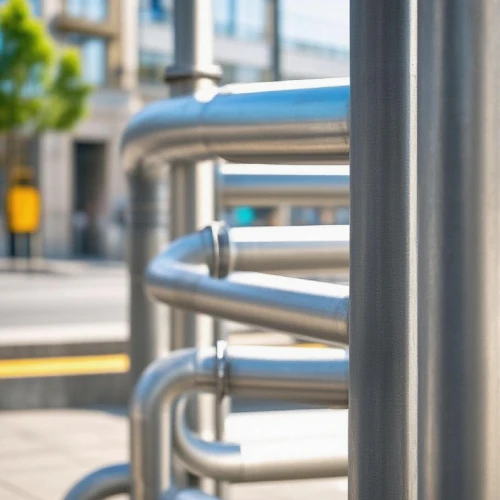The 'Vascular Doctors' of Underground Cities: Metal Pipe Fittings Solving Pipeline Blockages
Imagine an underground city, a vast network of pipes hidden beneath the bustling streets. These pipes are like the “blood vessels” of the urban infrastructure, carrying water, sewage, gas, and more. But just like human blood vessels, they can suffer from “blockage diseases.” Enter metal pipe fittings, the unsung “vascular doctors” that keep these underground systems flowing smoothly. From preventing clogs to withstanding extreme conditions, metal pipe fittings play a crucial role in maintaining the health of our cities.

The Problem: The Plague of Pipeline Blockages
Underground pipelines face numerous challenges that can lead to blockages. In sewage systems, grease, oil, and solid waste can accumulate over time, creating stubborn blockages that slow down or even halt the flow. In water supply networks, mineral deposits from hard water can build up inside pipes, reducing their diameter and water pressure. Tree roots, seeking moisture, can infiltrate pipes, causing cracks and blockages. These blockages aren’t just inconvenient; they can lead to backups, overflows, and costly repairs if left untreated.
Metal Pipe Fittings: The First Line of Defense
Metal pipe fittings come in various forms, including elbows, tees, couplings, and valves. Made from materials like steel, copper, and ductile iron, they offer several key advantages that make them ideal for treating pipeline “blockage diseases.”
Durability: Standing the Test of Time
One of the primary reasons metal pipe fittings excel is their durability. Steel pipe fittings, for example, are incredibly strong and can withstand high pressure and heavy loads. Ductile iron fittings, known for their flexibility and toughness, can resist impacts and vibrations, making them suitable for areas with heavy traffic or construction activities. This durability ensures that the fittings can endure the harsh underground environment for decades, reducing the frequency of replacements and minimizing the risk of blockages caused by damaged pipes.
Corrosion Resistance: Fighting Off the Elements
Underground pipes are constantly exposed to moisture, chemicals, and soil contaminants, which can cause corrosion. Corroded pipes are more prone to leaks and blockages as the interior surface becomes rough, trapping debris. Metal pipe fittings made from corrosion-resistant materials like copper or stainless steel form a protective layer on their surface, preventing rust and degradation. Copper fittings, for instance, develop a thin layer of patina that acts as a natural shield against corrosion, ensuring the pipes remain smooth and free-flowing.
Smart Design: Aiding in Flow and Maintenance
Metal pipe fittings are designed with functionality in mind. Elbows and tees are crafted with smooth curves to minimize turbulence and reduce the chances of debris getting stuck. Valves allow for easy control of the flow, enabling maintenance workers to isolate sections of the pipeline for cleaning or repair without disrupting the entire system. Some modern metal fittings even come with integrated sensors that can detect changes in flow rate or pressure, alerting operators to potential blockages before they become severe.
Real-World Applications: Healing the Urban Vessels
Sewage Systems: Clearing the Path
In sewage systems, metal pipe fittings are essential for preventing blockages. Ductile iron pipes and fittings, with their large diameter and smooth interior, facilitate the efficient flow of wastewater. Specialized fittings like cleanouts provide easy access points for maintenance crews to remove blockages. For example, in a large city’s sewer network, regular cleaning of metal pipe fittings using high-pressure water jets helps keep the system running smoothly, preventing backups that could flood streets and homes.
Water Supply Networks: Ensuring a Steady Flow
In water supply networks, copper and stainless steel pipe fittings are widely used. Copper’s excellent corrosion resistance ensures that the water remains clean and free from contaminants. Metal valves control the flow of water, allowing for precise regulation and quick response in case of emergencies. When mineral deposits start to build up, metal fittings’ smooth surfaces make it easier to use descaling techniques, restoring the pipes’ full capacity and maintaining a consistent water supply to households and businesses.
Industrial Pipelines: Handling Tough Conditions
Industrial pipelines often carry hazardous materials or operate under extreme temperatures and pressures. Metal pipe fittings, especially those made from high-strength steel or alloy materials, are up to the task. They can withstand the corrosive effects of chemicals and the stress of heavy industrial use. For instance, in a chemical plant, metal fittings ensure that pipelines transporting aggressive chemicals remain intact, preventing leaks and blockages that could pose serious safety risks.
The Future of Underground Pipe Health
As urban infrastructure continues to expand and evolve, so does the technology behind metal pipe fittings. Innovations such as self-healing coatings for metal surfaces are being developed to further enhance corrosion resistance. Smart fittings with advanced sensors and wireless communication capabilities will enable more proactive maintenance, predicting and preventing blockages before they occur. These advancements will not only improve the efficiency of underground pipe systems but also reduce the overall cost of maintaining urban infrastructure.
In conclusion, metal pipe fittings are the unsung heroes of underground cities, acting as “vascular doctors” to cure pipeline “blockage diseases.” Their durability, corrosion resistance, and smart design make them indispensable in maintaining the health and functionality of our urban infrastructure. The next time you turn on the tap or flush the toilet, spare a thought for these essential components working silently beneath the ground, ensuring that the “blood vessels” of our cities keep flowing smoothly.
